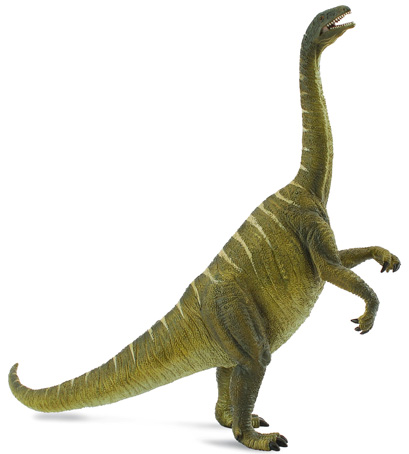Mass Dinosaur Grave Discovered in Switzerland
Palaeontologists from the University of Bonn have been busy making preliminary surveys of what may turn out to be Europe’s biggest mass deposit of dinosaur bones. About 300 dinosaur bones have been recovered so far but there may be thousands more buried under the Swiss village of Frick in the canton of Aargau.
An amateur palaeontologist exploring a small building site found the remains of a Plateosaurus and then shortly afterwards discovered a second one just a few metres away. Early indications are that this could be a mass grave of many hundreds of these large herbivores, with the bone bearing deposit stretching for at least 1.5 kilometres.
Plateosaurus was a large herbivorous dinosaur from the Late Triassic (222 million years ago to 210 million years ago). Adults could grow to over 8 metres long and weigh up to 4 Tonnes. Other mass graves of plateosaurs have already been discovered most notably at Trossingen in southern Germany. Plateosaurus means “flat lizard”, it is the best known of the prosauropod group of dinosaurs with fossils having been found in over 50 separate European locations.
Dinosaur fossils are relatively plentiful in this part of the Swiss/German border, although the picturesque village of Frick has a population of less than 5,000 it has its own village dinosaur museum. It looks like they are going to have to extend it somewhat if they want to display all the fossils from the Plateosaurus bone bed, as scientists have speculated that they could be as much as one compete skeleton every 100 square metres.
A Model of Plateosaurus
As yet scientists say it is to early to state how all the fossils ended up together, they are remarkably well preserved and are likely to yield more information. The jumble of disarticulated and disassociated bones could represent members of a large herd of plateosaurs that got stuck in marshland in a river delta and drowned in a sudden catastrophe. Perhaps this mass grave could have accumulated over many hundreds of years with seasonal floods in the river delta washing animal carcasses into an area where they accumulated, settled and were buried.
Plateosaurus is a very important dinosaur, it was named and described 170 years ago and the vast number of fossils of this animal has given scientists a tremendous insight into the anatomy and physiology of this large herbivore. Plateosaurs were extremely successful and a number of species have been identified, the large number of fossils from adults, sub-adults and juveniles has helped provide more information on the growth habits of dinosaurs.
To view a range of European manufactured prehistoric animal models: Dinosaur and Prehistoric Animal Models.







Hi all, hope to learn a lot and contribute where I can.